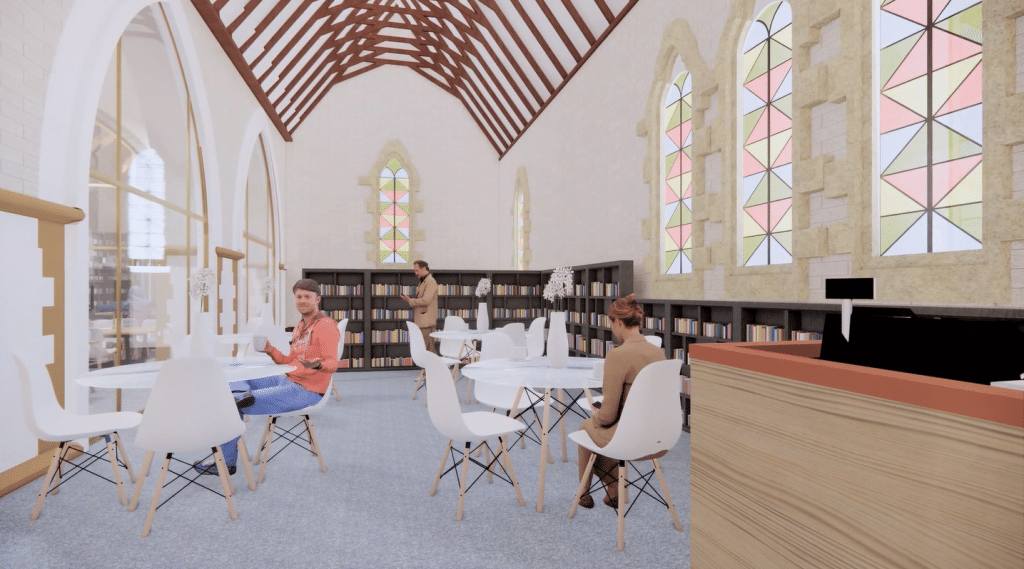Neil Burch, Deputy Head (Academic) explains how St Andrew’s facilitates the ‘Life of the Mind’ segment of the Education Strategy.
Gilbert-Scott’s tacit re-design brief in the 1840s will have been to create a space that honoured something that went beyond the material and the physical and that chimed with the institution’s beliefs and interpretation of something more existential. Our plans today are premised on a similar responsibility, albeit guided by a different mission. So much more than a beautiful, contemporary building design, St Andrew’s is a concept.
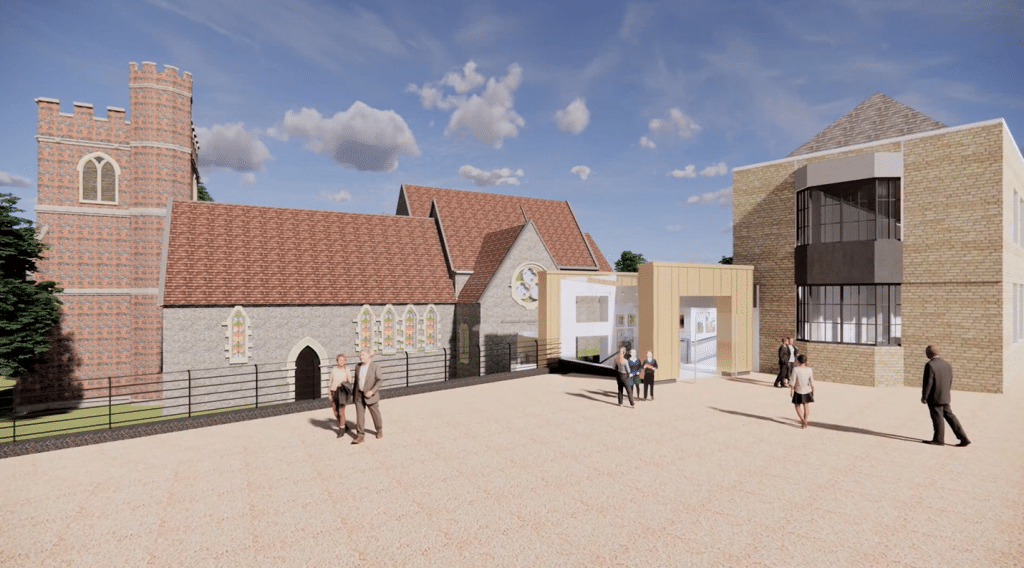 St Andrew’s is squarely a teaching and learning project; a reflection of Bradfield’s curriculum and a manifestation of what we see as our responsibility to prepare our pupils to work and study in the 21st century.
St Andrew’s is squarely a teaching and learning project; a reflection of Bradfield’s curriculum and a manifestation of what we see as our responsibility to prepare our pupils to work and study in the 21st century.
St Andrew’s will have books – over 13,000 books – but will not be a library;
it will have spaces that can be booked by teachers but where the teacher will merely be the facilitator not the ‘sage on the stage’;
it will offer coffee and refreshments but will not be a refectory;
it will have a hum of industry and collaboration but also space for silence and independent work.
Pen and pad will be reign just as much as the ubiquitous wifi.
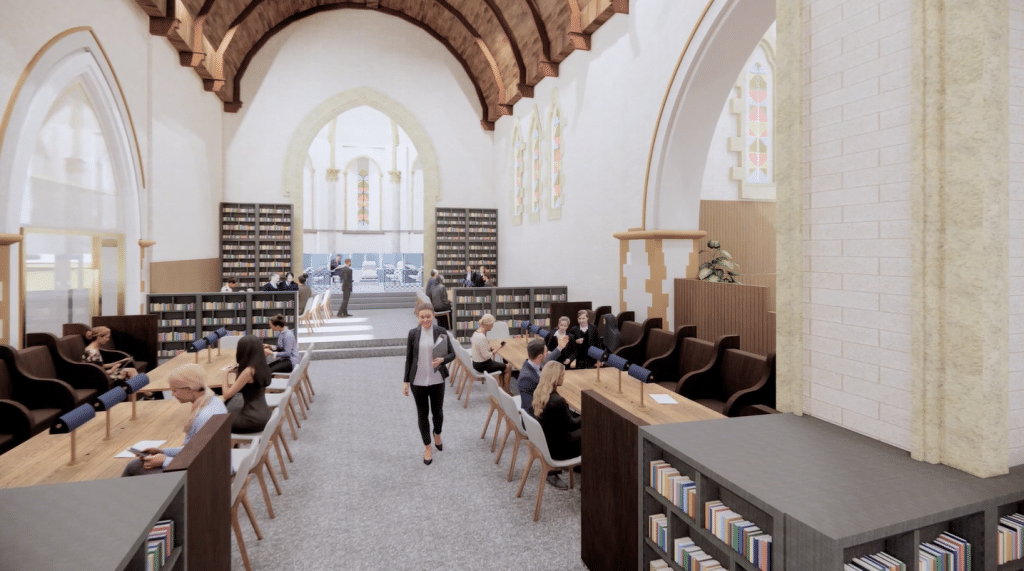
Key stats:
Capacity of 600 metres squared
160 Study Spaces
13,000 books
Corporate and commercial practices, in the context of the pandemic of the past 15 months, have shone the brightest of lights on this project and its importance for the College in terms of the pupils’ experience. ‘Blended’ and ‘flexible’ are operative words: St Andrew’s is not a single environment but a blend of spaces where each supports a different type of individual or group work for over 160 pupils.
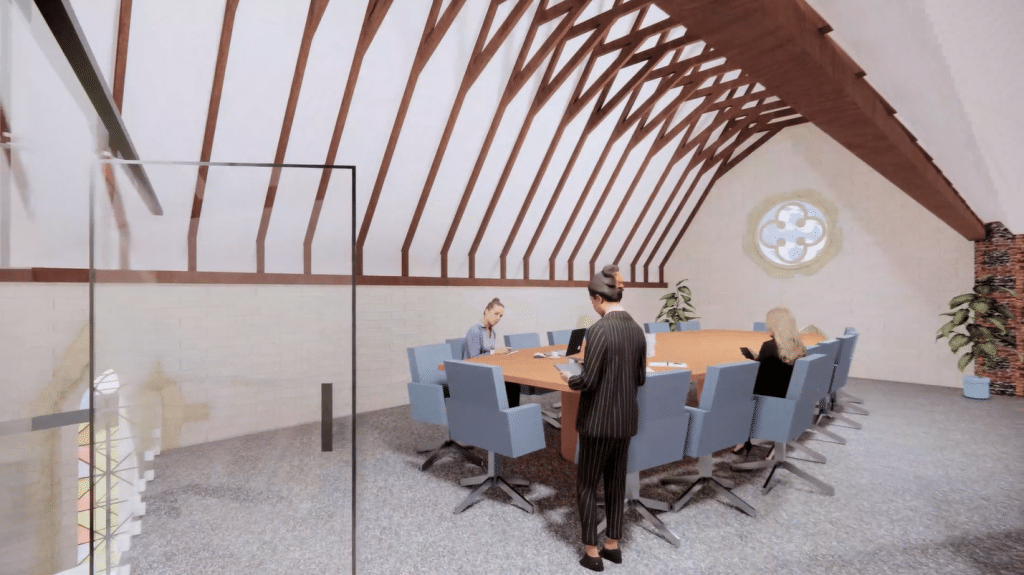
The ‘boardroom’ will allow for discussion and debate whilst the ‘think tank’ offers a tiered seating forum for our pupils to present, whether that be A level pupils and their work for the Extended Project Qualification or elements of the IB Diploma Programme – Extended Essay and Theory of Knowledge. 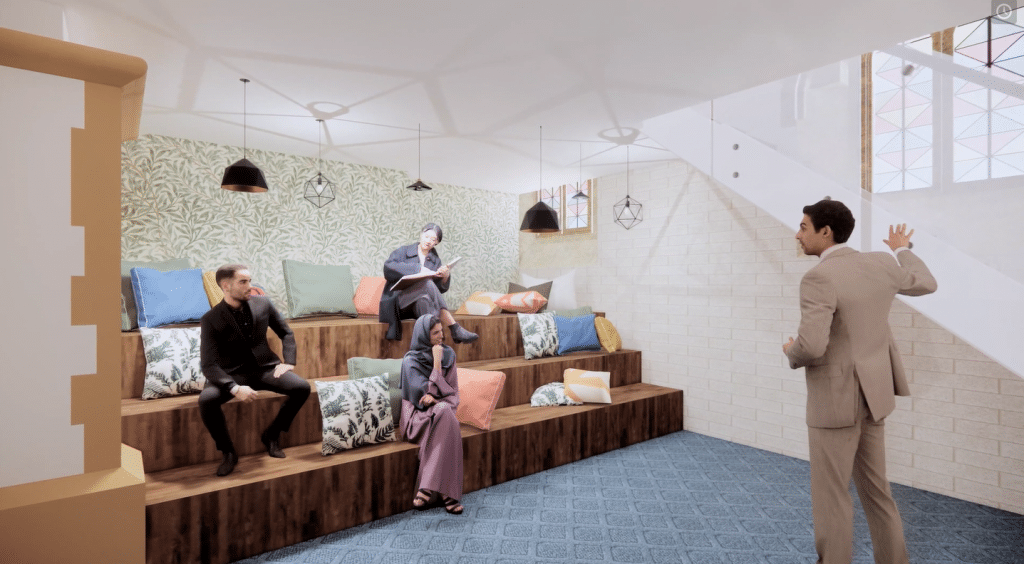
Bradfield’s Attitude to Learning curriculum asks its pupils to Think Creatively, Help Yourself, Reflect and Respond, and Review. As is the case in the re-designed ground floor of the Blackburn Science Centre and soon the first floor of Bloods, pupils will use St Andrew’s ‘Share Space’ to work collaboratively, share and iterate ideas, online and offline.
The imposing but sympathetic – aesthetically beautiful – glass walls in the nave mean teaching and learning can be seen all around you, the belief being that it is an immersive experience where best practice is role-modelled, particularly between those at the top of the school and younger pupils.
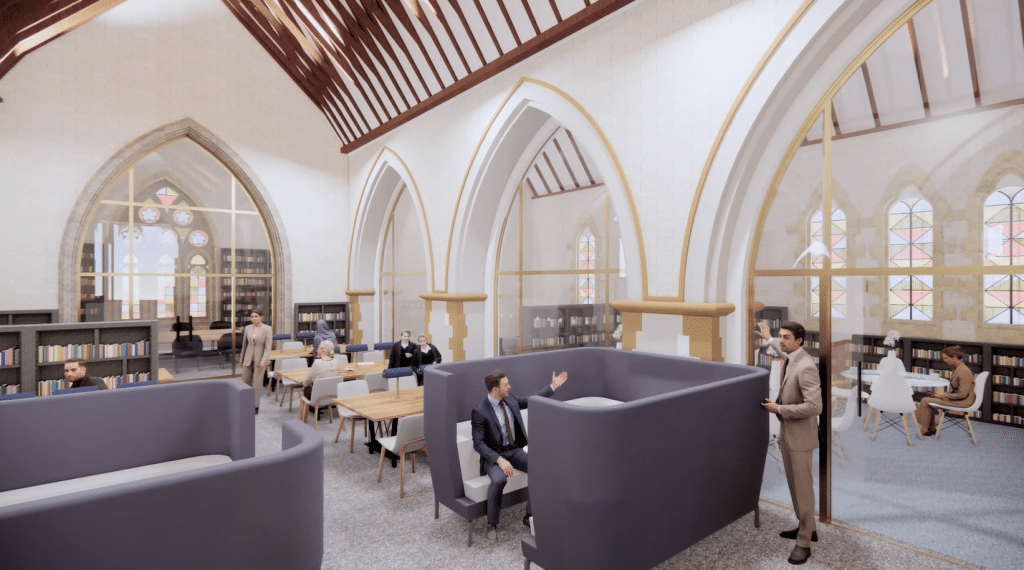
Again, this mirrors the design philosophy seen in Science, Geography, English and RS. Pupils in the quiet reading area will see the busyness of the discussion spaces but also the grind and focus of those working independently in the central space that runs through the core of the building, from nave to sanctuary.
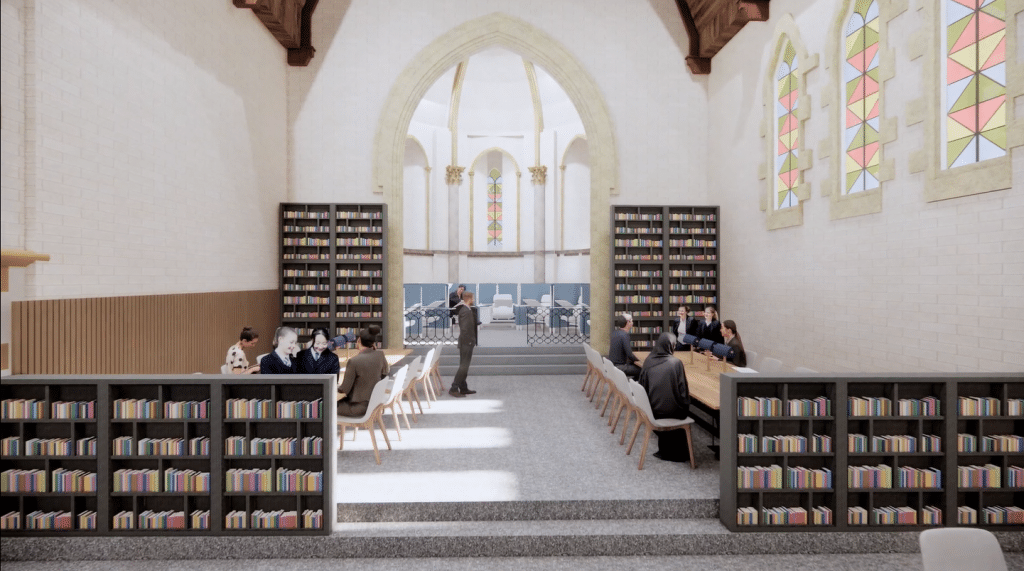
St Andrew’s is a concept. The project very intentionally targets the ‘Life of the Mind’ strand of Bradfield’s Education Strategy. Qualifications as they stand are under intense scrutiny but remain important for all manner of reasons. Bradfield understands, however, that education in its purest goes well beyond A*s and Grade 9s. Our responsibility is to develop in pupils a love of learning for learning’s sake; learning for the sheer enjoyment of the academic pursuit, supported by brilliant teachers, inspired by the buildings they study in.

St Andrew’s is the concept to enhance the way our pupils study and work together, fit for the adult world ahead of them.


